Affiliate disclosure: This post may contain affiliate links. Please see our Privacy Policy.
As a high acid fruit, lemons are perfect for canning. Lemon juice finds its way into all manner of canning recipes in small amounts to make them safe for water bath canning, but people rarely talk about canning lemons themselves. It’s easy to can lemons as juice, jam or whole sections for use all year long.
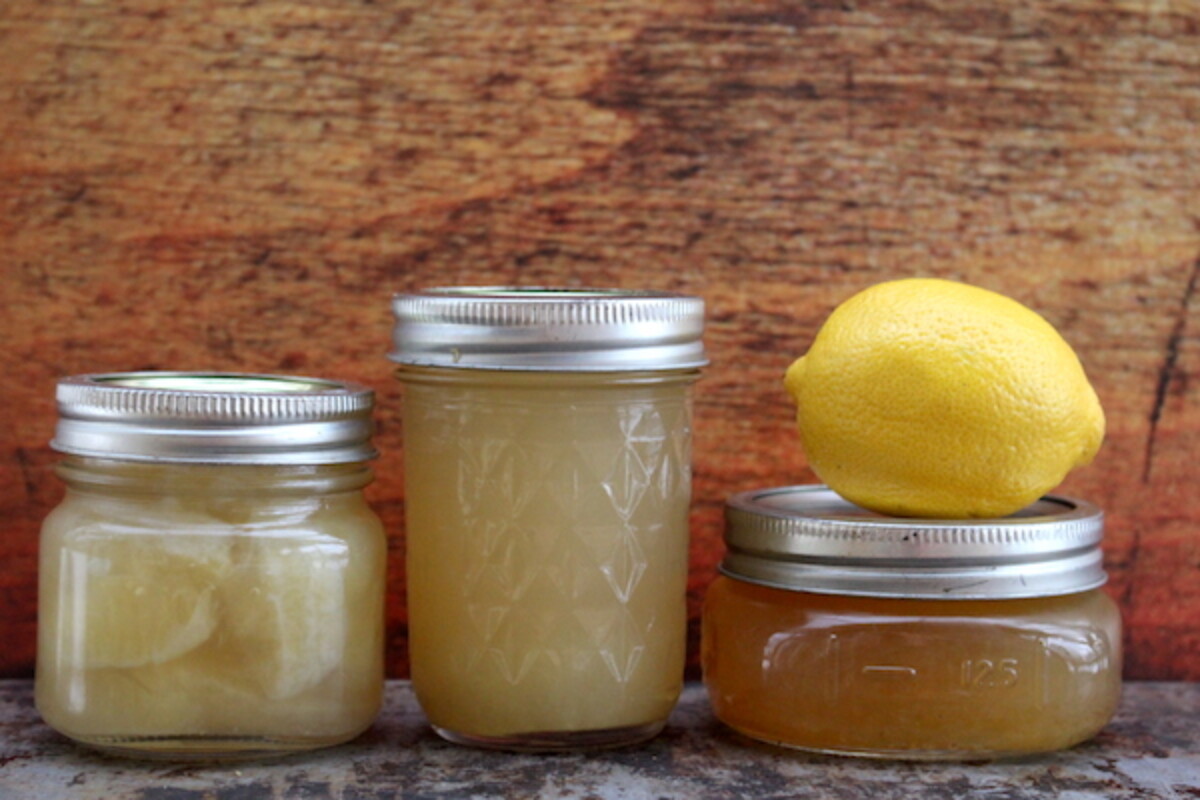
Canning Lemon Juice
One of the most versatile ways to can lemons is as juice. Start by juicing the fruit and then putting it through a fine-mesh strainer. While you can safely leave the pulp in the canned lemon juice, it will change the flavor slightly and make it ever so slightly bitter.
In many recipes, the pulp only gets in the way anyway. Make a clear filtered lemon juice and you’ll save yourself time later, and get better flavor.
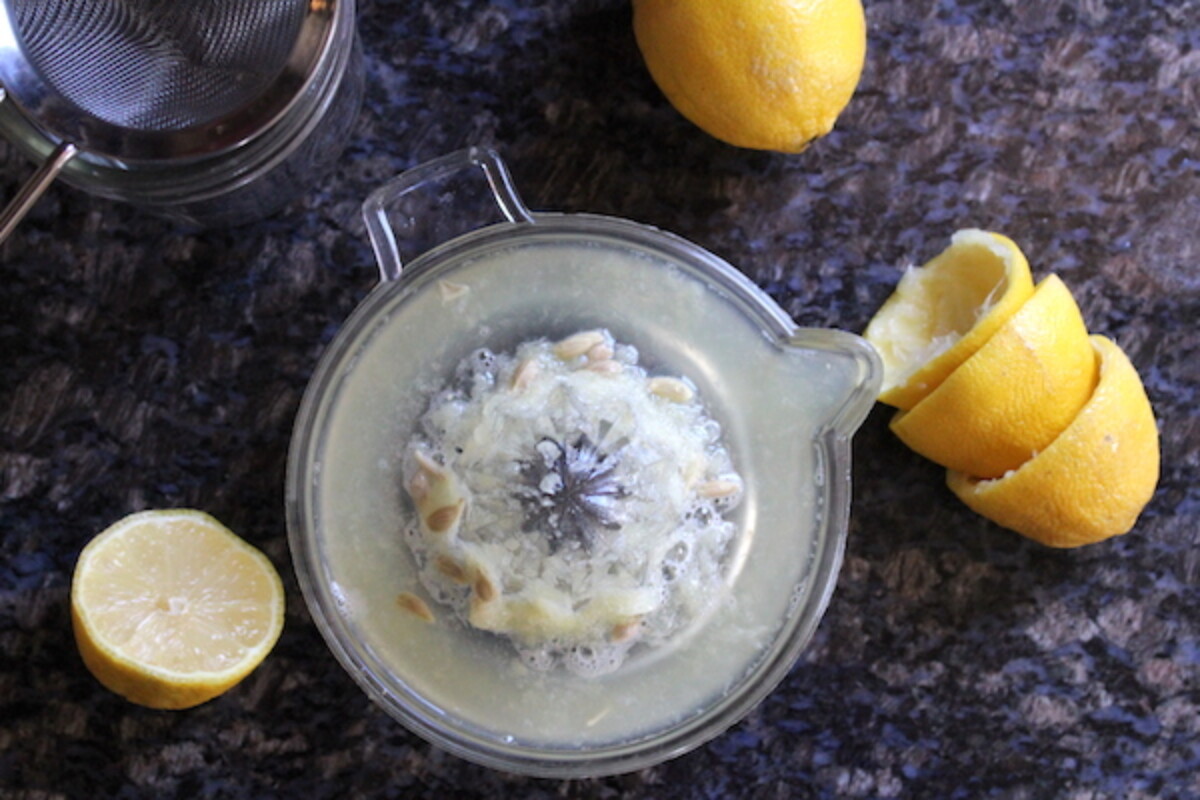
I found that it took about 5 lemons to make 1 cup of filtered lemon juice. A half-pint jar takes one cup to fill it up to the top rim, but since you have to hot pack the lemon juice you lose a slight bit to evaporation bringing it up to a boil.
I measured out 1 cup of lemon juice, brought it to a boil and it precisely filled a half-pint canning jar leaving the required 1/4 inch headspace. Place the hot-packed lemon juice into a water bath canner and process for 5 minutes.
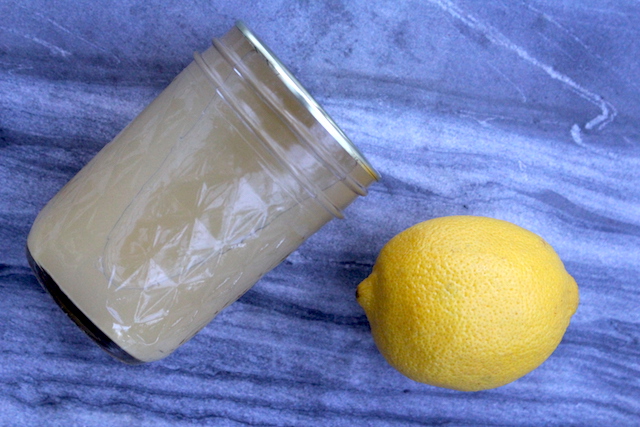
Canning Lemon Jam, Jelly or Marmalade
Citrus fruits are packed with natural pectins, and they’re actually used to make a brand of commercial low sugar natural pectin called Pomona’s Pectin. I made a simple no pectin orange jam that was a huge hit with the kids, so lemon jam was next.
While lemon jelly is really easy to make, I tend to prefer the chunky texture of jams rather than jellies. When making lemon jelly, you just cook lemons slices in water, strain and then add sugar and pectin.
For a lemon jam, I wanted all the chunky pulp left intact to give the preserve a bit of bite, but no peel since these are not organic lemons.
I used 1 cup of sugar to 1 cup of lemon pulp/juice and simmered it until the mixture reached gel stage (220 degrees F). The jam was a bit thinner than I’d like and quite sweet.
In the future, I’ll try less sugar and cook the mixture longer to get a thicker set. Lemon jam (or jelly) can be canned just like most jams, with 1/4 inch of headspace and 5 minutes in a water bath canner for half-pint jars.
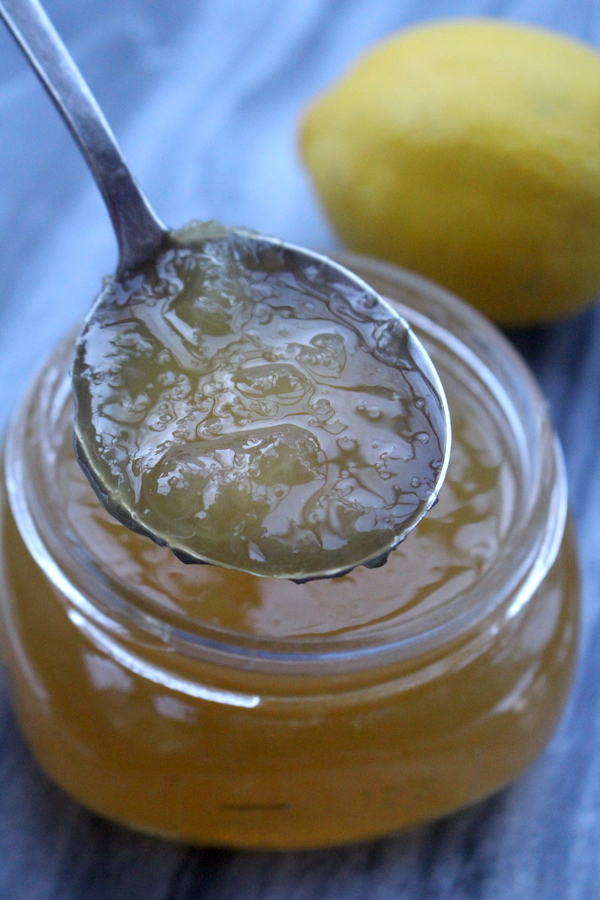
I wasn’t able to source any organic lemons this year, so I skipped on making lemon marmalade. If you’re looking for a traditional English lemon marmalade, try this one from BBC Good Food.
There’s also this Italian version, which is completely different and really intriguing. According to Food52, “While the English-style of marmalade results in a clear, often soft jam punctuated with finely sliced citrus peel, this is a Sicilian style recipe for lemon marmalade where the cooked, whole lemons are put through a passaverdura, a food mill, for an opaque purée that is then combined with the sugar and thickened over the stove.”
Canning Lemons in Syrup
Lemon juice and lemon jam all canned up, now it’s time to get more unconventional. I recently canned up whole oranges, so I could have a homemade taste of those cute little-canned baby mandarins that are so popular around the holidays. They were a huge success, so I thought I’d try my hand at canning lemon sections.
The first step is to completely peel the lemons and remove every last bit of pith from all around the outside. This takes a bit more work and care than peeling oranges, largely because lemons aren’t bred for easy peeling. Really though, it wasn’t that big of a deal and they still peeled relatively easily compared to grapefruits I’ve tried.
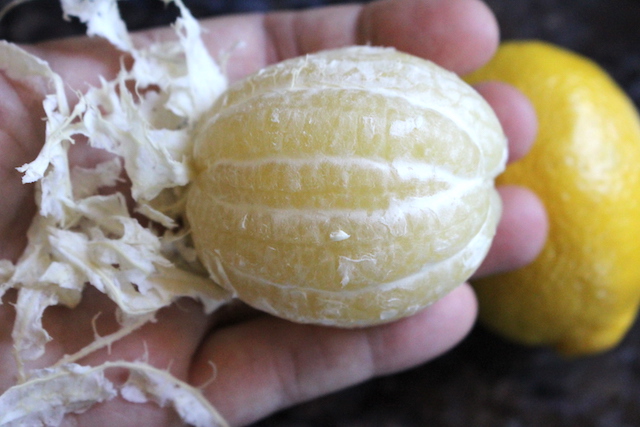
After the lemons are peeled, if they don’t quite want to break down into sections. I used the tip of a sharp paring knife to help split them apart slightly so I could work them apart with my fingers.
Once the individual sections are separated, located any seeds and carefully pinched open a tiny hole in the lemon section and slipped them out.

From here, lemons need to be hot packed. While it may be convenient to just pack the raw lemon wedges into a jar and pour boiling syrup over the top, they’ll be low quality. Lemons have a lot of air in their tissues, and the sections should be simmered in hot syrup for 3-5 minutes before being packed into jars.
Even still, once you’re packing them into jars be sure to pack them tightly. They’ll still shrink considerably during canning.
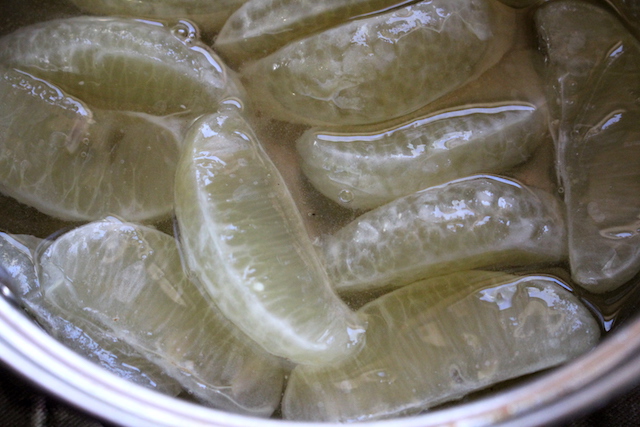
For lemons, I used considerably more sugar than when I canned oranges, obviously. While I was able to can orange sections in very light syrup, I opted for very heavy syrup for these canned lemon sections. Make a syrup using a 1:1 ratio of sugar to water bring it to a boil for about a minute to dissolve the sugar.
Cook the lemon sections in the hot syrup for 3-5 minutes before packing them into jars and covering with more hot syrup, leaving 1/2 inch headspace. Process in a water bath canner for 10 minutes.
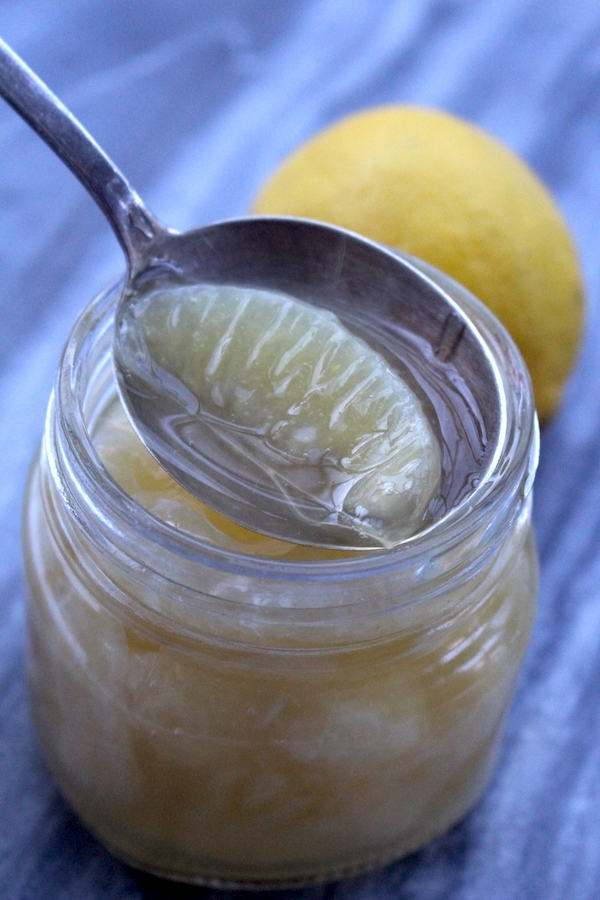
Now how am I going to use canned lemon sections you ask? They’re actually quite tasty right out of the jar, like a lemon drop candy only with juice.
I can envision creating a tasty real fruit layer in a celebration cake, or using them to top yogurt. My husband has plans to use a few to garnish whiskey sours. Use your imagination.
Other ways to Can Lemons
Beyond these three basic recipes, there are dozens of ways to can up lemons into tasty preserves. One of the simplest is lemonade concentrate, which is just lemon juice canned with a bit of sugar.
The Ball Book of Home Canning has a recipe for strawberry lemonade concentrate using 6 cups strawberries, 4 cups lemon juice, and 6 cups sugar. The strawberries are filtered out after a brief boil, and then the concentrate is canned in a water bath canner for 15 minutes (with 1/4 inch headspace).
It can easily be made without the strawberries for a straight lemonade concentrate, and recipes often suggest a 1:1 ratio of lemon juice to sugar for homemade concentrate. Personally, I’d drastically decrease the sugar because I like a tart lemonade with a lot of flavor, but that’s totally up to you.
Canning lemon curd is also an option, but in reality, that’s a much better way to preserve eggs than it is to preserve lemons. There are 7 egg yolks and 4 whole eggs in a small recipe. Still, there is a full cup of lemon juice used too.
For lemon jam and marmalade there’s endless variation, just use your imagination. The Ball Complete Book of Home Preserving has 20 lemon canning recipes, including Lemon Prune Honey Butter and Prickly Pear Marmalade.
Similarly, another canning book I’m quite fond of called Canning for a New Generation has 10 lemon-based canning recipes, including Blueberry and Meyer Lemon Marmalade and a Meyer lemon and rose petal marmalade. This summer when the roses bloom I’m going to make that rose petal marmalade!
I love my canner, but remember that the world of food preservation does not begin and end in a mason jar. Beyond just canning, there are literally dozens of ways to preserve lemons at home, from drying to freezing and fermenting.
Any other ideas? Have you had success canning lemons at home? Let me know your tasty ideas in the comments below.
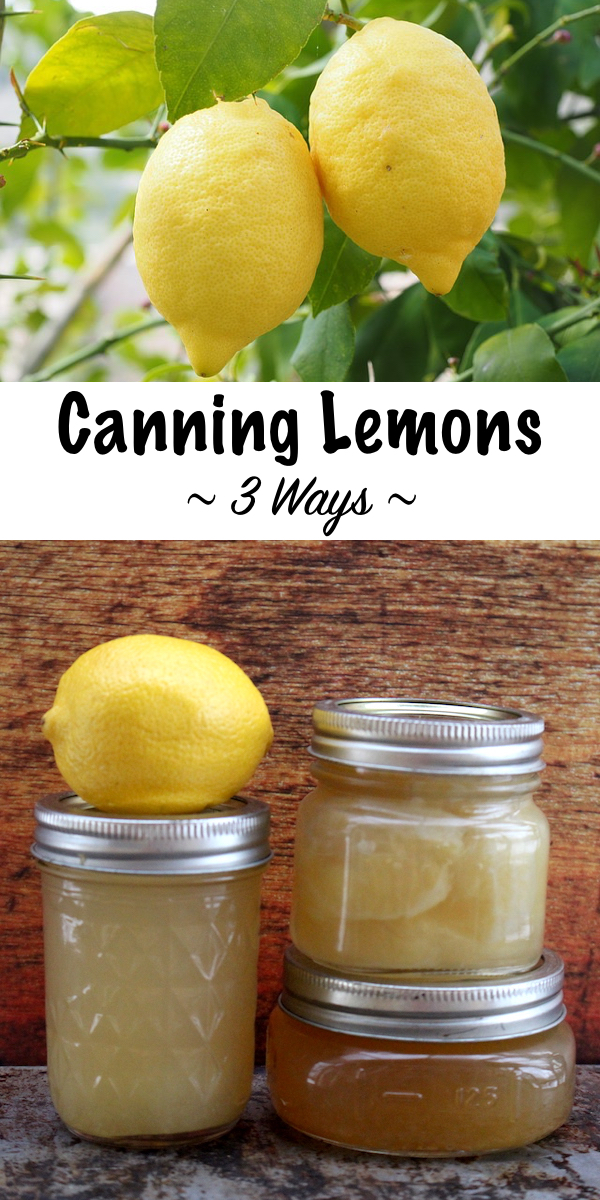
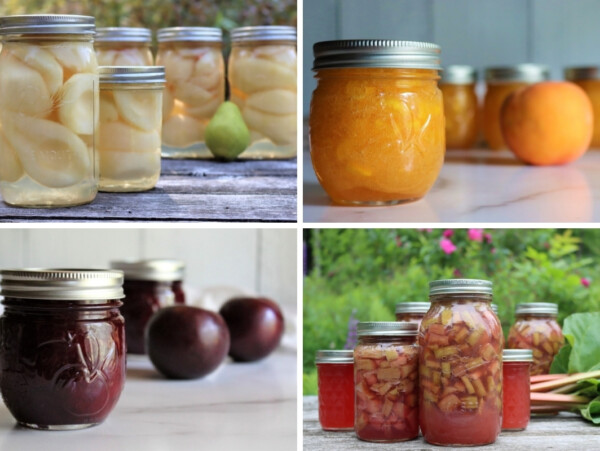
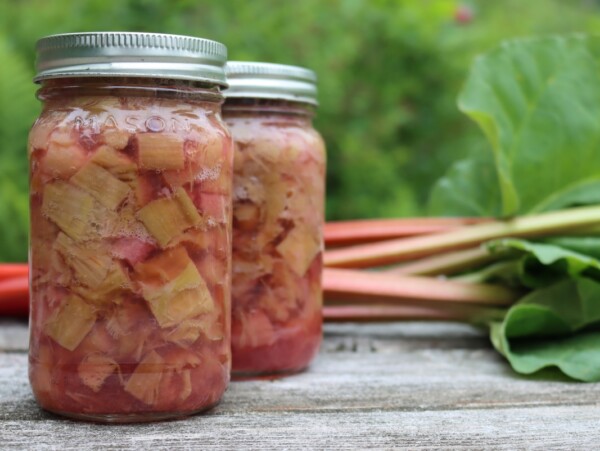
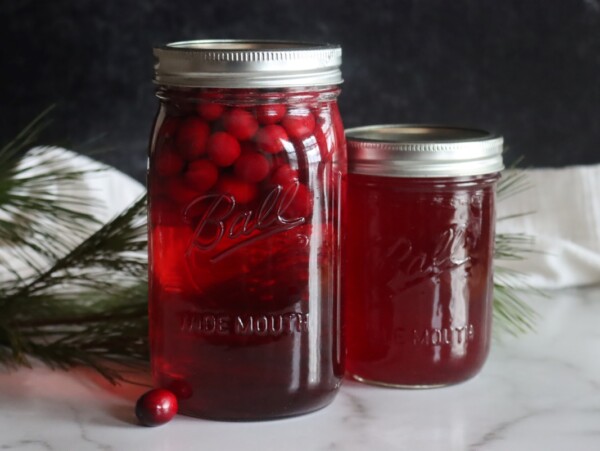
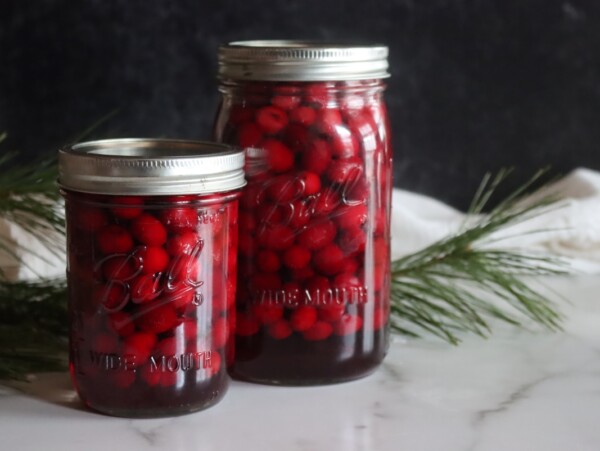










My lemon jam turned an amber reddish color. Is that normal. It Meyer lemon. Why would it do that. I cooked it in stainless steel pot
I’ve found that some lemons turn a red or brown color when canned and I honestly don’t know why. I’ve had that happen when canning lemonade concentrate. That happens to other veggies sometimes too (garlic, potatoes, etc) and there’s nothing wrong with it, just something about that particular lemon species.
If you haven’t found them yet, 4 kinds of organic lemons can be found at https://www.etsy.com/shop/FREERANGEFARMER, although this is late in the seaason. After washing them, I’ve put up salted lemons, and now I am freezing juice and lemon zest in 1 tsp amounts. (I found mini ‘ice cube’ trays with covers on Amazon.) His tangerines are absolutely addictive. Thank you for all you do!
Thanks for sharing.
love this site, very informational.
Thank you. We’re so glad you enjoyed it.
I asked about strawberry lemonade on another post, geeze, just found the answer here. Thank you, it gives me a lot of ideas on what to do with all of those in frozen foods using up freezer space.
Ball has a recipe for Honey Orange Slices, which includes spices. I often make this substituting lemon slices, It will can a lot of lemons and makes a lovely gift. I slice the lemons about 3/8th inch thick, rather than thinner. I also add a tablespoon or so of vanilla or brandy just before I can them. The Ball recipe suggests using them in tea or in salads. I also like them out of the jar or with cottage cheese or ricotta.
That’s great. Thanks for sharing.
So many good ideas and suggestions, don’t know where to start, lol. Thank you, love to hear your thoughts on what you are going to try.